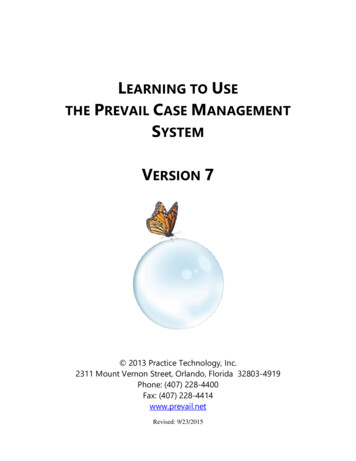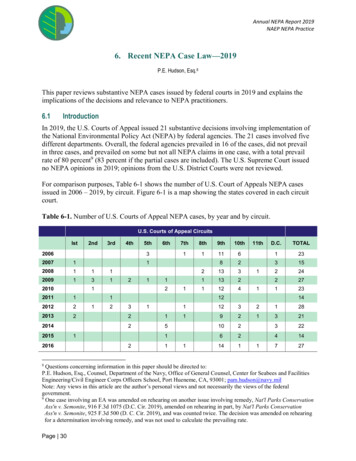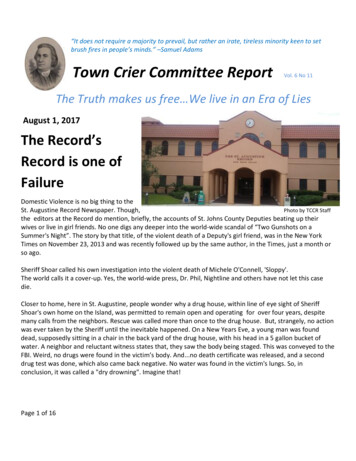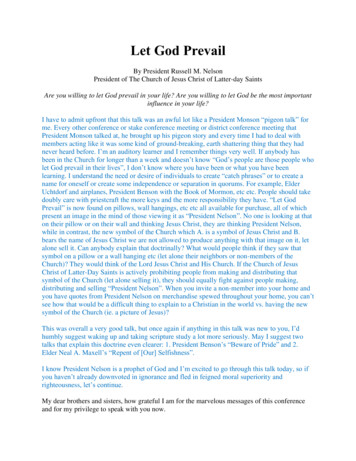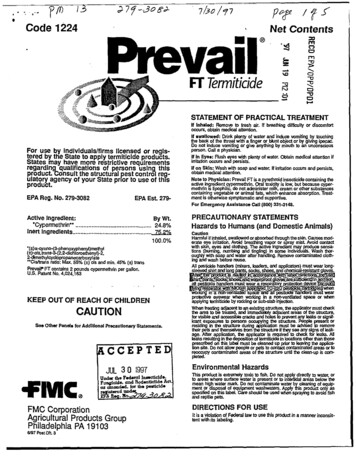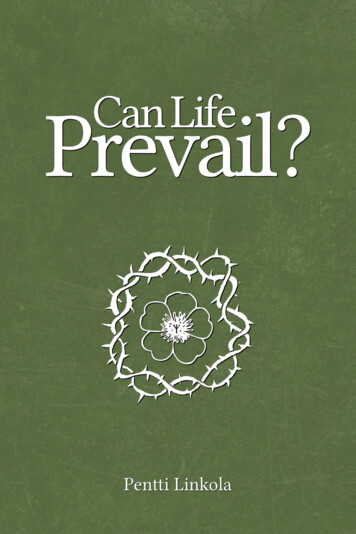
Transcription
Can Life Prevail?Pentti Linkola- 130 AH -
Publisher’s ForewordWe live in a world increasingly under threat of collapse due to its gradualdestruction of the environment. Everyone knows about the dangers ofclimate change, endless production of garbage, the unspeakably horrificmistreatment and exploitation of animals, and so forth. Everyone knowsthat if things do not change drastically soon it will mean the end of modern civilisation, and possibly even life. Yet, no one wants radical change.People are too comfortable to give up their high-octane cars, wide-screentelevision sets and exotic holidays. Pentti Linkola has no time for politetips on slightly reducing one’s personal carbon emissions or eating moreeco-friendly food. He goes directly to the core of the matter and presentsradical solutions to the world’s environmental problems. Although thesehave at times shocked some people due to their controversy, Linkola’swritings are not based on a desire for controversy, but on a lifetime ofmeticulous observation of his surroundings, study and deep thought.Linkola’s solutions – such as dismantling modern cities and moving backto the countryside – may not be popular, but they are nevertheless worthy of careful consideration by thinking people. For this reason it is ourgreat honour to present one of his books – the most recent – to the English-speaking world for the first time.We would like to take this opportunity to thank Eetu Rautio of Corrupt, Inc for providing us with this translation, and Terhi Isomäki andSirkka Kurki-Suonio of Tammi Publishers for helping us resolve ambiguities in the text.The Publisher,March 2009
Table of ContentsForeword . 9Introduction . 11Preface by the Author . 17Chapter 1: FinlandHumbug . 19The Finnish Body . 23Sales Season . 26What is the Majority and What is the Minority? . 29Life Protection, Utopias, and Agriculture. 30Against Highway Crime . 33Chapter 2: ForestsThe Old Forest of Talaskangas. 34The Green Lie . 35It is Dark in the Woods . 39The Forest Covering in Finland Must Be Restored . 43A Logging Story . 45Is the WWF Favouring Crime? . 48Chapter 3: AnimalsFrom Gunslingers to Environmental Disaster . 51An Animal History of the New Age . 54The Ethics of Environmentalism . 58The Suppressed Nightmare of Conservation . 62The Cat Disaster. 66Joyful Chickens and Sad. 67The Animal Protector As an Apostle of Doom . 71Aspects of Animal Protection . 73Animal Rights in the Bible . 74A Look at Vegetarianism . 76The Value of Humans and That of Animals. 81
Chapter 4: The World and UsA Refresher Course in the State of the World . 85The Intolerable Misfortune of Technology . 96Women As the Protectors of Life . 99Human Nature and History . 103The Decline of the World Knows No Mercy. 106The World at the Turn of the Millennium . 107Bull’s Eye . 110A Perspective on the State of the World,or The ABC of the Deep Ecologist — Part One . 113A Perspective on the State of the World,or The ABC of the Deep Ecologist — Part Two. 115Chapter 5: The Prerequisites for LifeThe Sum of Life . 120On the Reversal of Finnish Society. 123Can We Survive? A Model for a Controlled Future . 127
Pentti Linkola
ForewordA short personal recollection might help to introduce this collection ofessays by Finnish ecologist Pentti Linkola.I am currently working as a part-time librarian. The head librarian isa square middle-aged lady. A week ago, the two of us were in the officewhen our conversation switched to the present state of the world. Thegreatest of all threats, the lady explained, comes from overpopulation:the Earth is simply far too crowded at present. What is needed, she argued, is a stringent policy of population control, and a world governmentto effectively implement it.The point of the story is that the lady concerned had never read PenttiLinkola: in point of fact, she had never even heard his name. Had she, Iwonder what she would have made of the opinions voiced in this book?For sure, Linkola is not your average Green. Unlike most Greens, heis not afraid to speak unpleasant truths. Many of the thoughts Linkoladares to publish will often have crossed the minds of ordinary citizens(like my head librarian); yet, similar opinions would hardly be featuredin the media of Western countries.Linkola, in a way, is an ordinary citizen himself: not a puffed-up intellectual, but someone who has spent most of his life working as a fisherman, earning a living by the Finnish shores, while fighting for thepreservation of the Finnish wilderness:“Fighting for forests means fighting for Finland. Three-quarters ofFinland consists of woodland. What the forest looks like is what Finlandlooks like. Finland equals forest. If the forest is flayed, Finland is flayed.”Linkola is clearly a patriot of sorts; not the flag-waving sort, though:like Edward Abbey, he is someone who cherishes a breathing motherlandteeming with life.Linkola and Abbey share much in common: a love for the wild, a hatred of mechanical chaos and a disdain for the conceited ways of modernleaders. Both are men of the land; both are revolutionaries. Linkola, likeAbbey, talks of the wilderness from first-hand experience; but while thepresent book includes a number of personal remembrances, it is not theautobiography of a retired Finnish fisherman.
10Can Life Prevail?As the train of industrial civilisation rattles on at ever increasingspeed headed towards the abyss, crushing entire ecosystems in its wake,the heterogeneous essays contained in this book issue a dire warning.Radical problems call for radical solutions. While the solutions advocated by Linkola might not seem palatable to many people, they are nevertheless founded on a disillusioned assessment of environmental factors, on a profound ecological sensibility and a holistic approach to human existence. The disparate articles collected in this volume, and themany areas of enquiry they cover, should thus be envisaged as part of acoherent attempt to define under what conditions the preservation of lifeand biodiversity on Earth might be secured.Can Life Prevail? is the latest book of Linkola’s to have been publishedin Finland. It is also the first to have been translated into English. In presenting this work to an English-speaking public, efforts have been madeto remove those passages that would prove too obscure for readers unfamiliar with Finnish geography, ecology, and culture. In no way dothese editorial choices detract from the overall feel of Linkola’s writing,which is both global in its appeal and profoundly rooted in the livingreality of Finnish nature. Finland will be seen to emerge in these pagesas a useful case study for assessing the damage wrought by “Suicidal Society” and for outlining what societal alternatives might still be availablein an overcrowded world on the brink of collapse.
IntroductionAs the many symptoms of environmental decline appear, ‘green’ thinking rises in our collective consciousness as the latest trend. Like all fads,its insincerity separates it from being able to achieve a goal. Our popculture ecology will not avert ecocide but it will provide a fashion in themeantime.While we sell each other neutered ‘green’ products and magazine articles about recycling condoms and turning off appliances, the crisis continues unabated. Fish stocks plummet, industrial chemicals stain watersupplies, the air turns acrid with smoke, and land development excludesmore species from their native habitats. Even as we see effects on ourclimate, half of our population is fanatically engaged in neurotic but ineffective ‘green’ activity, and the rest are defensively oblivious.On the cusp of this imminent ecological holocaust, human beingsseem unsatisfied with the still relatively new modern lifestyles they haveadopted. Suicide rates rise; people bemoan the hollowness of life; doubtcreeps into our minds even when we believe we are safe. Representativesof all sides of political, religious and cultural divides agree we, as a species, are heading down a bad path with no brakes. But no one can tell uswhat this path is, or how to stop it.History shows us that others have faced similar mental blocks toother problems. When a society ages enough to forget its founding goals,it can only repeat the methods that worked to achieve those goals in thepast. As a result, such societies become trapped in a “methodologicalghetto,” limiting themselves to methods used in the past and consideredsafe. They forget that goals, with the passage of time, often require newmethods in order to attain them. Today, this could certainly be seen tobe the case.In less than 200 years, the entire architecture of our communities inthe West has transformed from local villages to large-scale industrial empires. In that process, our goals have become methods. Against this overwhelming trend, which can be seen to manifest itself as a pathologicalstate which empowers certain agencies who squash dissenters, historythrows a few great minds who adhere to clear thinking even when itcontravenes convention, and look past method to the underlying goals.
12Can Life Prevail?Pentti Linkola is such a mind. Where other environmentalists argueover method, Linkola targets our goals through a critique of the designof our modern industrial empire. He sees how our methods — whichsound good on paper — produce what Garrett Hardin called “the tragedyof the commons,” where people doing what seems sensible individuallybecome as a crowd a destructive force.***Kaarlo Pentti Linkola was born on December 7, 1932 in Helsinki, Finland to an affluent family well-established in academia. We know littleof his early life because he avoids talking about himself. At college hestudied zoology and botany at first, but then changed his studies to become a naturalist in the older school of Audubon, Muir and others. Hepublished his first book in 1955, The Great Bird Book, with co-authorOlavi Hilden.Of interest to those who want to plot the curve of both his learningsand beliefs, he started writing peaceful, nature-oriented material like thepamphlet “For the Fatherland and Human” (1960), which encouragedpacifism and conscientious objection, presaging much of the thought tocome about during the tumultuous counter-culture years ahead. Thetransition into this time and a perceived absence of effect in the naturalworld shaped Linkola’s future thought.As the years passed, Linkola steadily progressed toward his currentideology. In a collection of essays entitled Dreams of a Better World(1971), he spoke against the modern Western way of life and its overconsumption. The next decades brought Introduction to the Thinking ofthe 1990s (1989) and Can Life Prevail? (2004, English edition 2009) whichexpanded upon his previous ecological ideas with a stance that manyconsider eco-fascist or eco-traditionalist. In Finland, he is a popular author and recipient of the coveted Eino Leino prize for excellence in nonfiction writing.Linkola is famous for living as he advocates others live. Supportinghimself for many years until his retirement by fishing from a rowboatand selling the fish from a horse cart, he lived simply in a cabin in thewoods near Lake Vanajavesi. He lacks a car, running water, computer orother electronics. He travels mostly by bicycle, longer distances by bus.His biggest departure has been to get himself a cell phone “for emergencies.”His most tangible activism has been to create the Finnish Natural Heritage Foundation (Finnish bank code 549409-522493), into which hethrust almost all of his monetary property. This foundation buys up Finn-
Introduction13ish forest land, one acre at a time, to conserve it from utilization by others. “It’s the only system in Finland through which you can save a pieceof old forest with even a small contribution,” he says.While his self-consistency gained him guru status despite the politicalunpopularity of his ideas, Linkola remains controversial but active as anagent provocateur, giving interviews and writing the occasional shortarticle. Although his work remains relatively unknown outside Finland,as environmental decline accelerates, his work is increasingly finding awider audience as people worldwide actively seek for plausible ways inwhich humanity can prevail.***The French writer Michel Houllebecq, in his book Atomized, used ametaphor from quantum physics in which he described people as eitherbelonging to waves, or movements outside of themselves, or particles, inwhich in the same isolation that makes them ‘free’ makes them lonely,apathetic, unable to form connections.In our time, it is not only unfashionable but inconceivable to thinkoutside the method of preserving individual autonomy. We worship‘freedom’, itself a negative definition focused not on what we can do butwhat we cannot be obligated to do. Our civilisation understands itself notas a product of history and maker of future history, but as a facilitation— like a big shopping mall with a legal system — of individuals doingwhat pleases them, so long as they do not interrupt others doing the sameand disrupt the peace.This condition has not made us happy. While we agree that liberty,equality, fraternity and open economies are noble methods, the goal ofthese — having a better civilisation and individual lives — has not manifested itself through those methods. By basing our ideal on freedom, wehave closed ourselves off to obligations outside of ourselves, which coincidentally are the things that make us feel most alive. We are prisonersof the self, and it is no surprise we act selfishly as a result.Linkola most clearly distinguishes himself from other environmentalspokesmen by thinking practically about the effect of individuals “as agroup”: “The consciousness of ecology has grown, but still the AverageJoe only increases the load. The bustle is controlled by three words: aslong as. As long as we can still travel to the other side of the globe fourtimes a year, we will do it. As long as we can still buy a SUV, we will buyit. This is the reality.”In doing so, he has escaped the methodological ghetto. The safe methods we have been using do not achieve our goals, so we must change.Linkola saw that while every well-meaning “education” program has
14Can Life Prevail?vanished without making change, the occasional governmental fascismlike the Endangered Species Act in the USA has produced results. Eitherwe enforce an unpopular truth on ourselves, or we wait paralyzed by ourinability to transcend our methods, and let nature enforce it on usthrough environmental cataclysm.To avoid the selfishness of individuals, Linkola advocates an end toThird World aid and immigration, mandatory population control, and thecreation of a ruthless “green police” to clean up the planet. His theoriestie together deep ecology with a recognition that democratic, liberal societies cannot control themselves. He believes that the individual whoconnects himself to reality through struggle — and not the individualwithdrawing into him- or herself — brings the greatest meaning to life.As a result, Linkola’s ultimate contribution may be more spiritualthan political. Humanity makes mistakes, but is not irredeemable in itself. All we must do is change our behavior, and that starts with changingour expectations. We can do better, even if it means facing our fears.“Every example throughout the history of humanity shows that onlydeprivation and struggle create a human life worthy of the name and thatmaterial welfare leads only to despair,” Linkola explains.***A few of his more controversial points: Progress — consisting of technological, economic andmoral/social growth — is an illusion. “Its priests ferventlycling to the idea that material prosperity brings enjoymentand happiness — even though history has shown that onlymaterial want and a life of struggle lead to a meaningfulexistence. In other words material prosperity doesn’t bringabout anything apart from misery.”Democracy empowers selfishness. “Any political systembased on desire is fundamentally flawed. Society and lifehave been organized upon the basis of individual desires,not on what is good for nature.”An elite is needed to rule. “Just as only one out of 100,000has the talent to be an engineer or an acrobat, only a feware truly capable of managing the matters of a nation ormankind.”We need strong leadership to keep individuals from beingselfish. “Our only hope lies in strong central governmentand uncompromising control of the individual citizen.”
Introduction 15Population control can be done with passive means. Birthsmust be licensed, immigration and international trade mustend, and growth must be reduced.We can find a more balanced life. People can travel withbicycles, rowboats and horse carts. Private cars are confiscated. Long-distance travel is done with sparse masstransport. Trees will be planted on most roads.Business, which empowers selfishness, must be reduced.Manufacture is allowed only for proven needs. All majormanufacturing capacity is state owned. Products will bedurable and last for generations.We can re-invent a culture where science, spirituality andpolitics are united around realism. “Education will concentrate on practical skills. All competition is rooted out. Technological research is reduced to the extreme minimum. Butevery child will learn how to clean a fish in a way that onlythe big shiny bones are left over.”Among naturalists, or those who study nature as a wholeas a system of patterns, Linkola’s views are neither anathema nor unusual, although they are rarely articulated because it is political and commercial suicide. Jacques Cousteau, another well-known naturalist, once said: “This is aterrible thing to say. In order to stabilize world population,we must eliminate 350,000 people per day. It is a horriblething to say, but it is just as bad not to say it.”***Unlike those who are stranded in the morals and methods of environmentalism, Linkola recognizes, in his own words, that “the biggest threatto life is too much life.”Our expansion is the cancer consuming our planet; we can be prohuman but realize that, like humans individually feel a need to diet, wemust suppress our urge to fill our inner voids with the reckless consumption of external things. Underneath this fearsome proclamation is a compassionate voice speaking to each individual: all is not lost; we canchange.At the end of our investigation into his beliefs, it seems the heart ofLinkola is love. A love for humanity, encompassing not only what it isand what it has been, but what it could be. A love so great that it candestroy in order to protect, or create, much as our universe does not shyaway from destruction in order to make new and better things.
16Can Life Prevail?Pentti Linkola may be a trickster who is using radical ideas as metaphors, or he may be speaking literally — it’s hard to tell. What is certainis that he restarted the debate on how to fix the environment by gettingus out of the confinement of ourselves, and looking at the big picture,which gives hope for realistic solutions for the first time in human history.Brett StevensAustin, Texas, 2008
Preface by the AuthorWhen I write or speak about the important questions in life, when I persistently attempt to erect dams in the way of a devastating flood, most ofmy friends and many strangers regard me as a naïve optimist. They thinkthat the game is already over: that the life of our planet is declining; thatit is heading at a rapidly accelerating pace toward final suffocation, andthere is no longer much we can do about it.Yet, I will still argue against these people. I know the same things theydo: I know that the end of history is nigh. Still, I am talking about veryhigh probabilities, not about absolute certainties. It is almost the samething.Besides, I am also interested in less than what those thinkers and observers who stand for a “total solution” are interested in: what mattersfor me is the preservation of life on Earth until a distant future. In anemergency, I am satisfied with a delay, a postponement (even a slightone): some “extra time for nature”, as the late zoologist and friend of nature Olli Järvinen entitled his collection of articles. It is not irrelevant fora human individual whether he will live to eighty or eighty-one years ofage: a person, like any animal, will usually hang onto his extra year orextra days.I find some worth even in mere speculation, in hypothetically considering under what conditions and after what changes the continuation orlengthening of life could be assured.Ultimately, I am resigned to simply searching for an explanation forthe world, with no reformist aim in mind – at least for the time being. Iam working on a report and strive, in a way, to be a contemporary historian, one more insightful and accurate than most. I was forced to struggle in an attempt to split chaos into fractions, to divide the wide front ofhuman insanity into cross-sections to examine, in the attempt to formulate a difficult analysis after an easy synthesis.Although my view is a worldwide view and my area of observationthe whole of Europe, the nation closest to my heart is, understandably,my homeland. And it is a fortunate coincidence – fortunate for my explanation of the world – that this country provides the clearest exampleof destructive development in the whole world. Even the ethnologist andexplorer Kai Donner, a long time ago, stated that of all peoples the Finno-
18Can Life Prevail?Ugric have been the most willing to absorb the influence of Western culture and abandon their own. Faster and more radically than any othernation, Finland is switching to the most horrid forms of market economy,to an uncritical worship of technology, to automation and media vapidity; with information technology pervading all human exchanges,(American) English has now been adopted as a second language in Finland – and as the first in an increasing number of professional sectors.Amidst all of this chaos, I am quick in noting – and cataloguing – thegood, joyful things in life. Good and joyful are many things found in thiscollection of writings: things that share the one common feature of beingstill in existence. I have found nothing good that was ever brought aboutby progress.These articles contain many repetitions, as they were written in heterogeneous circumstances. Much overlap will be found with texts written by other thinkers, with my earlier works and even between differentpieces of this collection. This is the least of my worries, as repetition is,to some extent, the mother of all learning. A thousand more echoes areto be found in the liturgy that is constantly hummed around us: the liturgy of the prophets of economic growth, of competition, efficiency and‘competence’.Pentti LinkolaSääksmäki, April 25, 2004
Chapter 1FinlandHumbug(1993)In the thirty-five years I have worked as a fisherman, I have had to dealfirst hand with the phenomenon of food hygiene. Personal experience isalways a clear indicator of the development of certain phenomena: in thiscase, the degeneration of our cultural history.As a small boy, I spent my summers on my grandfather’s estate byLake Vanajanselkä, which was surrounded by dozens of fishermen’s redcabins. Many family members used to spend the summer there as well,and naturally had to be fed. From time to time, Hilma Silvo would cometo sell his fish, and would sit on the long bench of the main room with abasket at her feet. I thought this was a magnificent basket: it was coveredby black alder branches, and when you opened it slightly, you were immediately struck by the glimmer of large pikeperch, their eyes glaring.Most of these fish were taken to the nearby town of Hämeenlinna, wherelong rows of fish salesmen awaited in the market hall. The fish were carried to town in the basket, beneath the black alder branches. The fishermen would row up to a liner at the centre of the lake, which slowed downto take the basket on board. The ship stopped at quays along every cape,coming and going at irregular hours. Hygiene was never discussed: thefish was bought in hot weather as well as cold, and the buyer was theone to top and tail it. In the evening the fishermen rowed up to the shipagain: a basket was then lowered over the bulwark with an envelopecontaining the day’s wage.Those memories, which my senior fishing brethren helped me recall,stretch back to the prosperous days of the 1930s. War followed and yearsof distress: at least back then, the concept of hygiene was not at all connected to the business of eating. We ate what we had, and particularlythe most expensive delicacies — wares from the black market — may havegone through a long process of hauling and ripening. No one had heardof vegetarianism, although it had been an old folly in Europe; certainly,
20Can Life Prevail?I cannot see how it might have survived those rough days: I suppose itdisappeared and was later resurrected. In any case, Finns were statistically healthier during the war than at any other time in their history —unless, of course, we also include bullet holes in the statistic.When I followed the role models of my childhood and became a fisherman, I was ten years late: I missed the golden age of those troubledyears. At that time it was common practice for most women fromValkeakoski and Hämeenlinna to wait in a queue by the shore for theVanaja fishermen. And no fish was wasted either: roach, blue bream,white bream, anything was good enough. But of course, fish was valuedeven in the late 1950s when I started fishing: it is shocking today to discover what high prices a catch could fetch back then. The fish were transported by bus in cardboard boxes and crates to the market salesmen ofÄänekoski and Jyväskylä. At this stage, I had yet to hear of the expression “food hygiene”.I caught whitefish, the easiest Finnish fish to spoil, in Lake Päijänne,and an ice cellar was an absolute requirement in the hot weather of Julyand August. If you threw the whitefish from the net straight onto the iceand then poured some new ice into the crate in the evening, the fishwould last well through the journey from the city, and sometimesthrough long business cycles to your customers’ kitchens. Back then,even city-dwellers were rooted in nature: they wanted fine, undamagedfish to scale and gut themselves (only in the case of the roe you mighthave removed the liver and possibly heart and kidneys). Had you tried tooffer a gutted fish in the market, people would have thought you wereup to something fishy.As welfare Finland progressed, however, many regulations began tobe issued from wiseacres’ desks. As the road network had expanded,roads had been made straighter, deliveries faster, and fish was beingtransported even more quickly from the mesh to store counters, government officials came to believe that the fish too, perhaps, was going tospoil sooner. According to the new regulations, all fish was to be icedduring transportation up to mid-October, when experience had alreadyshown that using any ice was unnecessary even in September. This, ofcourse, meant additional expenses and more working hours for the arrangement of packs and crates.Soon it was found that cod and flatfish had to be slaughtered and gutted immediately after the catch and sent already scaled to wholesale. Atthat time, unfortunately, I had just been dispatched as a sea fisher to theFinnish Gulf, where I struggled to make a living with flatfish in July andAugust, when there was no other fish to catch at all. Swift like the LightBrigade, in the half-darkness of the night, w
I am currently working as a part-time librarian. The head librarian is a square middle-aged lady. A week ago, the two of us were in the office when our conversation switched to the present state of the world. The greatest of all threats, the lady explained, comes from overpopulation: the Earth is simply far too crowded at present.
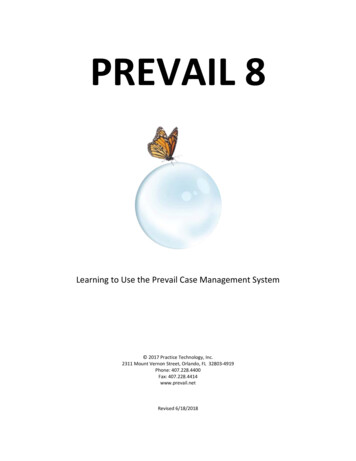
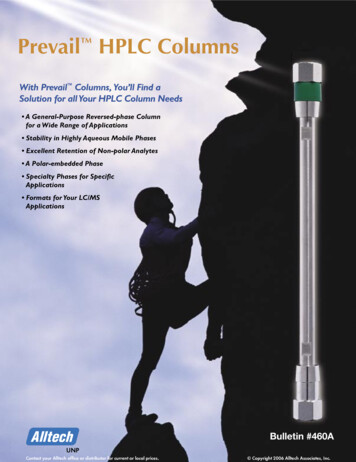
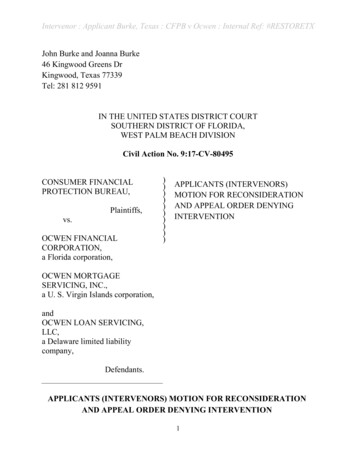
![March 3rd, 2017 [Manage Archive in Microsoft Outlook 2016]](/img/34/archive-outlook-2016.jpg)

